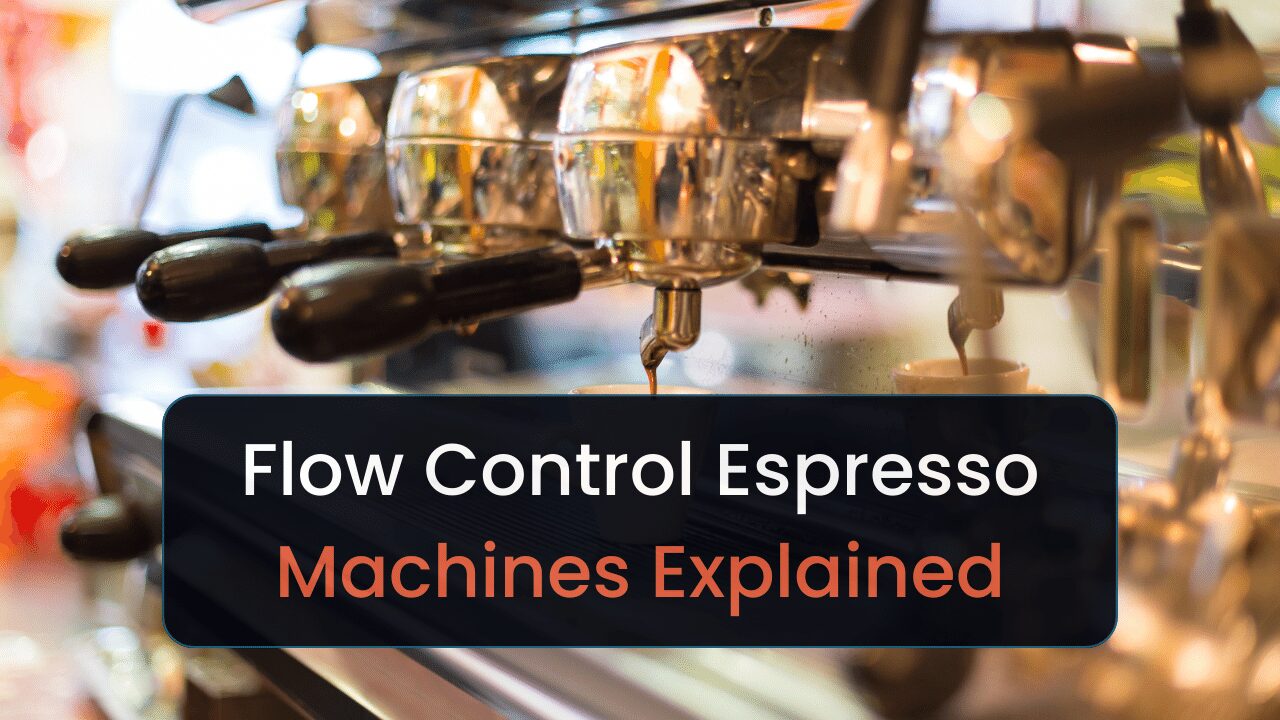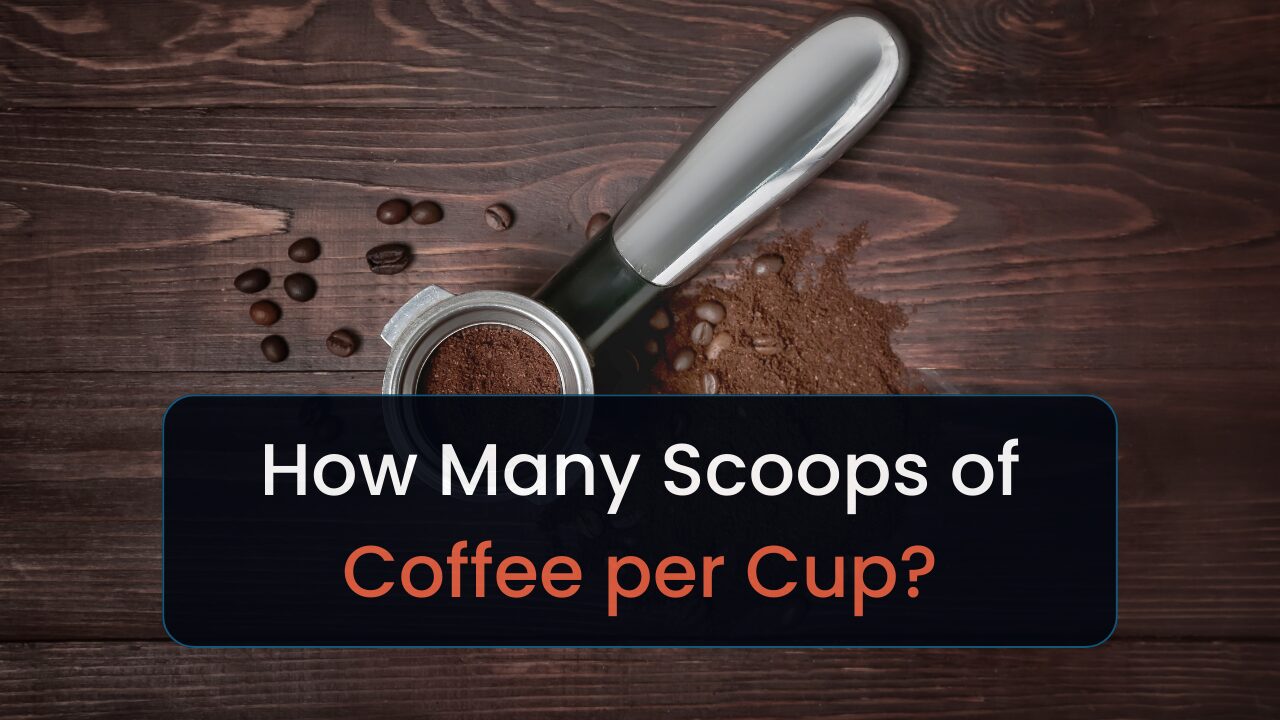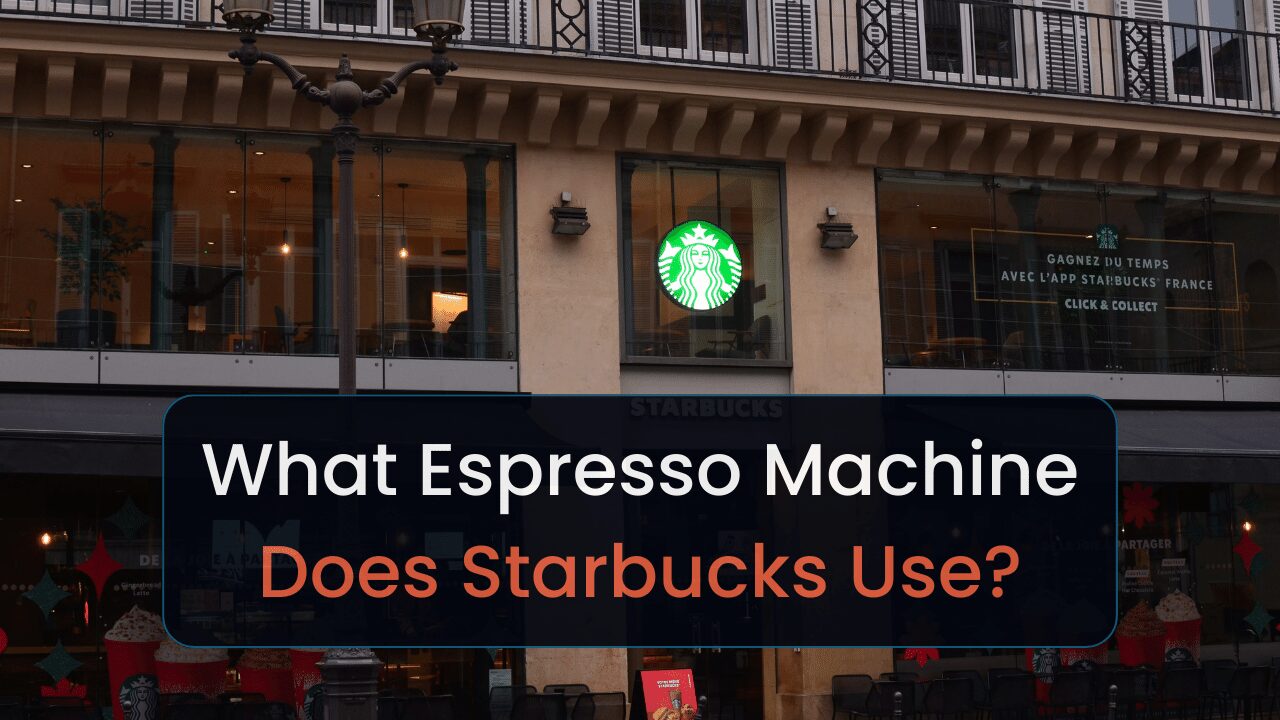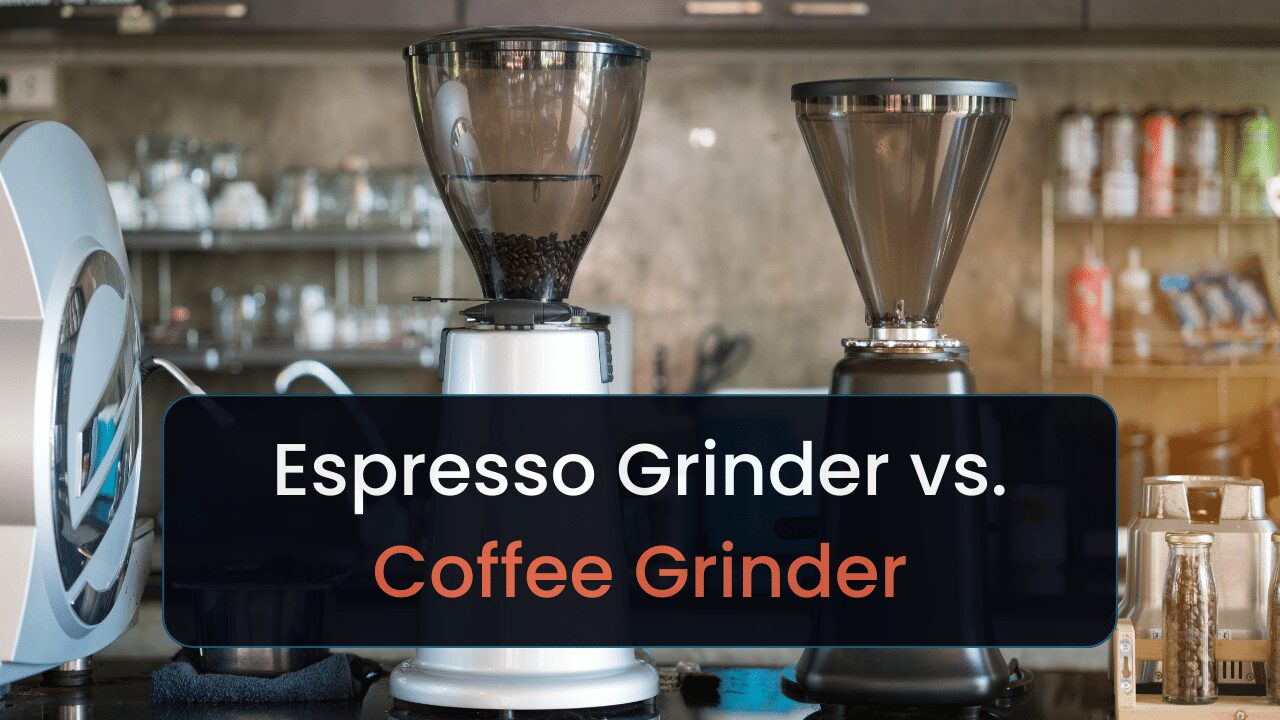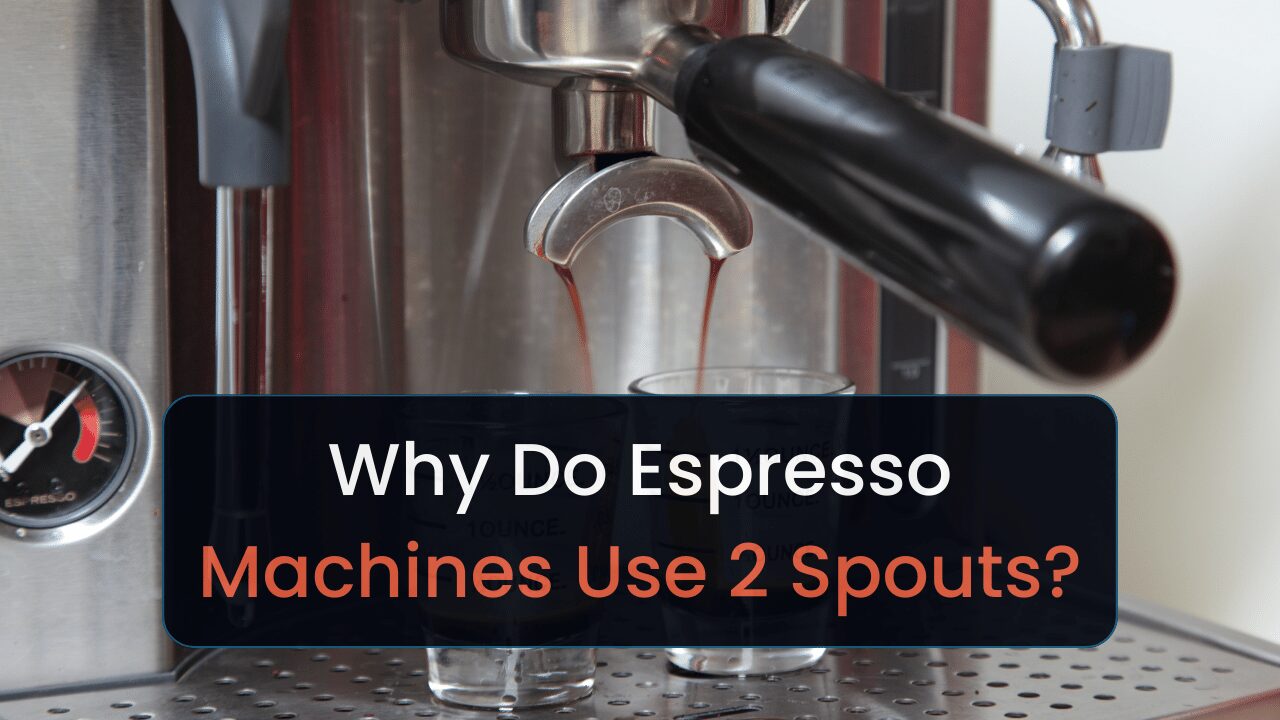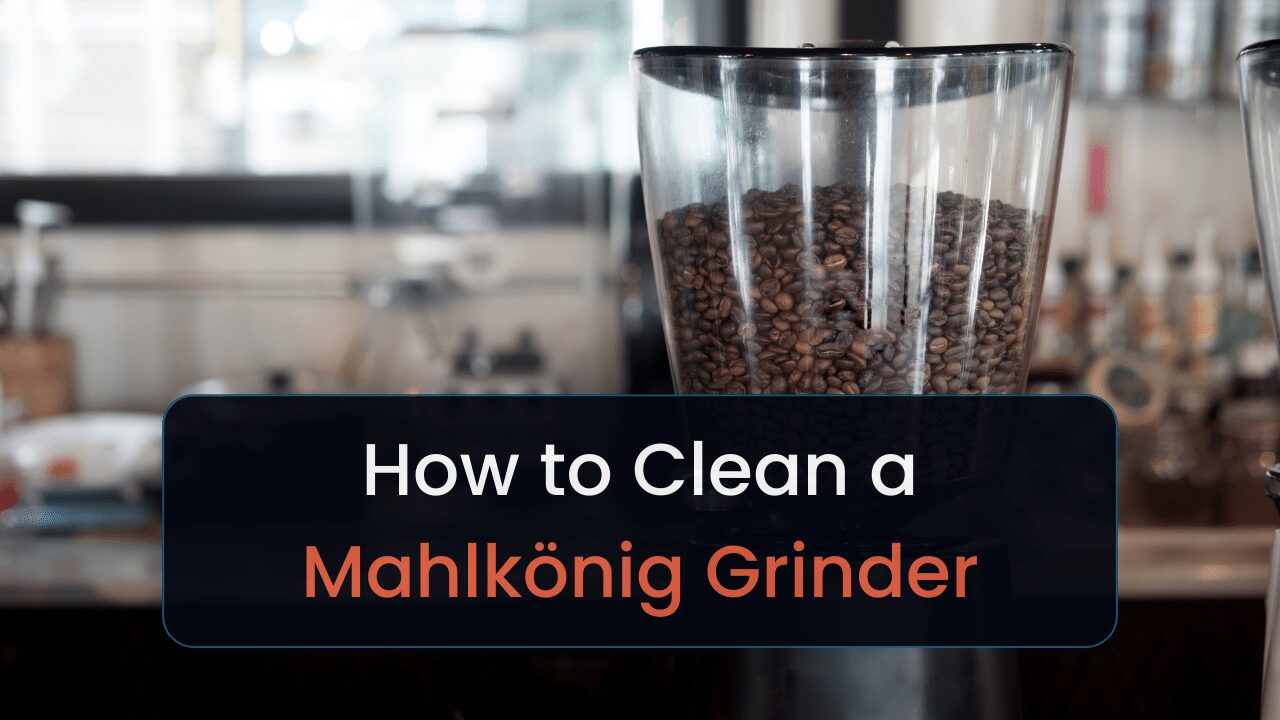I’m an espresso enthusiast who wants to know how to optimize every step of espresso brewing. I felt the urge to write this guide after learning about bottomless portafilters.
Here’s what I’ll cover:
Dive in to learn more.
Key Takeaways
- They allow you to see the espresso extraction process as it happens.
- May make messes, as they can splash or spray espresso at the user if there is espresso channeling.
- Easier to clean than spouted portafilters, as there are no spouts to trap coffee grounds & residue.
- Requires more skill to use than spouted portafilters.
What is the Purpose of a Bottomless Portafilter?
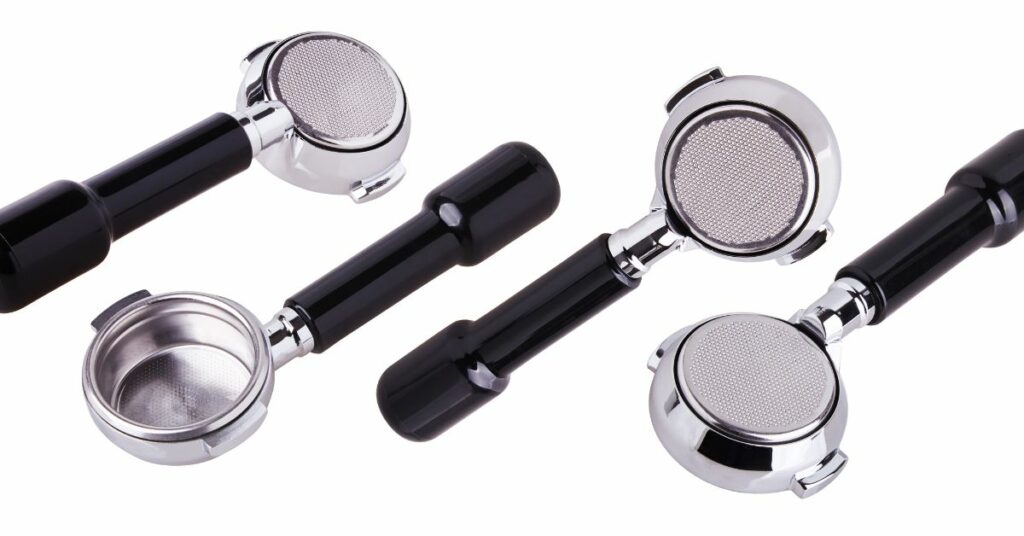
A bottomless portafilter (or naked) is a portafilter that doesn’t have the bottom part of the filter basket. This design lets you see the extraction process as the water flows through the coffee grounds.
Baristas often use bottomless portafilters to troubleshoot espresso extraction problems. They’re also great for experimenting with different tamping techniques and coffee grind sizes.
You may not need a bottomless portafilter if you are new to espresso making. However, if you’re serious about making great espresso, a bottomless portafilter becomes valuable.
Here’s why you should use them.
Why You Should Use a Bottomless Portafilter
Here are some reasons why you should use a bottomless portafilter:
- Troubleshooting extraction problems: Allows you to see the extraction process as it happens.
- This can help you to identify problems such as channeling & uneven extraction.
- Experimenting with tamping techniques: Test different tamping techniques to find what works best.
- Aesthetics: Watching espresso flow from portafilter offers great aesthetics.
Naked portafilters are great for helping you diagnose air pockets in espresso pucks. This helps prevent future channeling and improve grounds distribution. They’re also pretty to look at when watching espresso flow from it.
Now learn about the benefits of using this type of portafilter.
Benefits of Using a Bottomless Portafilter
Advantages of using this type of portafilter include:
- Visualization: Allows you to see the entire extraction process.
- More consistent extraction: Helps adjust your technique to produce a more consistent shot.
- Easier cleaning: No spouts means easier to deep clean.
Due to a lack of spouts, naked portafilters are much easier to clean and offer more visualization with shots. Such pros can reduce the likelihood of mold buildup and will help improve shot quality over time.
What are the cons of using this type of portafilter? Let’s see.
Downsides of Using a Bottomless Portafilter
Disadvantages of using bottomless portafilters include:
- Messy: Splashes or sprays espresso at the user if there’s espresso channeling.
- Can’t split between 2 cups: Can’t brew 2 espresso shots simultaneously.
- More difficult to control: Water doesn’t flow through a concentrated location (spouts).
This type of portafilter may spray espresso at you in some circumstances. Hence, I recommend keeping a rag nearby. It also is more difficult to control and can’t brew more than a shot at the same time.
Now that you know the pros and cons, is it worth getting a naked portafilter?
Are Bottomless Portafilters Worth it?
A bottomless portafilter is worth the extra cost since it’ll allow baristas of all levels to troubleshoot their drinks. Allowing them to solve all issues with brewing espresso.
They’re messy and can’t split between 2 cups, but it’s an excellent investment to help any barista improve their shots.
Since you’re interested, check out what brands make naked portafilters.
Brands That Make Bottomless Portafilters
Choosing a specific brand for a portafilter is important due to machine compatibility and durability. As every brand will have varying levels of each.
Here are a bunch of brands that manufacture bottomless portafilters:
| Gaggia | La Marzocco | Rancilio |
| De’Longhi | Rocket Espresso | Breville |
| ECM | Seattle Coffee Gear |
You’ll find a lot of knock-off brands on e-commerce sites that offer cheaper bottomless portafilter than the above brands. I wouldn’t trust them, though. They usually have cheap handles that could break after a short period.
I might have not covered enough information about spouted portafilters. Let’s fix that.
Regular Portafilter vs. Bottomless
Here’s a quick comparison between the 2:
| Portafilter | Bottomless | Regular |
| Cleaning & Maintenance | Easier | Harder |
| Taste & Crema | No difference | No difference |
| Cost | More expensive | Cheaper |
| Troubleshooting | Easier | Harder |
| Splashing | More | Less |
| Design | Delicate | Durable |
The more expensive bottomless portafilters are much easier to clean due to the lack of spouts. This eliminates the chance of mold buildup on your portafilter. And can help prevent you from getting sick.
There’s also easier troubleshooting due to the lack of spouts. You’ll know whether there’s espresso channeling, side-channeling, or donut pre-infusion.
Spouted portafilters can’t diagnose such issues. But they don’t risk splashing since all the coffee runs along 2 spouts. They’re also more durable and don’t require as much care. However, it’s a bit more challenging to remove portafilter baskets.
Since you can’t press against the bottom of the basket and wiggle the handle while lifting. That’s only possible with bottomless portafilters.
Neither portafilter produces better-tasting drinks. Some baristas speculate that bottomless portafilters will make drinks taste better, but that’s a theory [1].
Bottomless portafilters will also brew shots quicker than their counterparts due to a lack of spouts.
Lastly, learn how to choose the best portafilter and whether that matters.
How to Choose the Best Bottomless Portafilter
Here are some factors to consider when choosing a bottomless portafilter:
- Compatibility: Make sure it’s compatible with your espresso machine.
- Should have the same diameter & threading as your espresso machine’s portafilter.
- Material: Bottomless portafilters are typically made of stainless steel or aluminum.
- Stainless steel is more durable, but aluminum is lighter & cheaper.
- Price: Range in price from around $20 to $100.
- The price will depend on the material, quality, & features of the portafilter.
- Features: Some have additional features, such as a spout or a handle.
While shopping for a bottomless portafilter, you must consider the basket type. The original equipment manufacturer (OEM)—stock baskets—work best for beginner baristas. However, intermediate and expert baristas should consider precision IMS and VST baskets.
Those with less money should consider the former. And anyone who wants the best taste should get the latter.
And if you’re wondering what the best bottomless portafilter is, don’t. The baskets make an actual impact, whereas the specific portafilter you own doesn’t.
Conclusion
Get a bottomless portafilter if you’re serious about making high-quality espresso. And if you don’t mind a bit of spraying until you end espresso channeling. They’re better than their spouted counterparts since they’re easier to clean and troubleshoot.
While you’re shopping, consider a new espresso machine. Here are some devices that we recommend.

